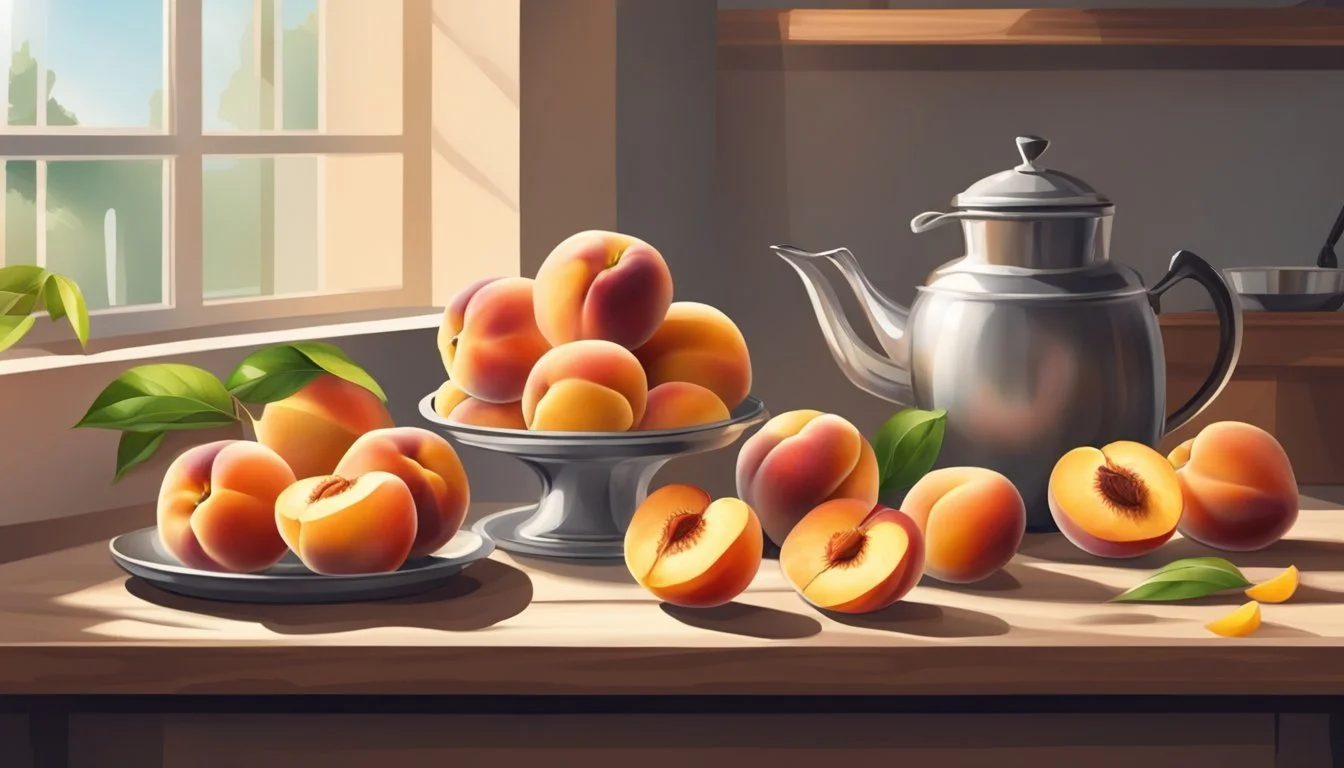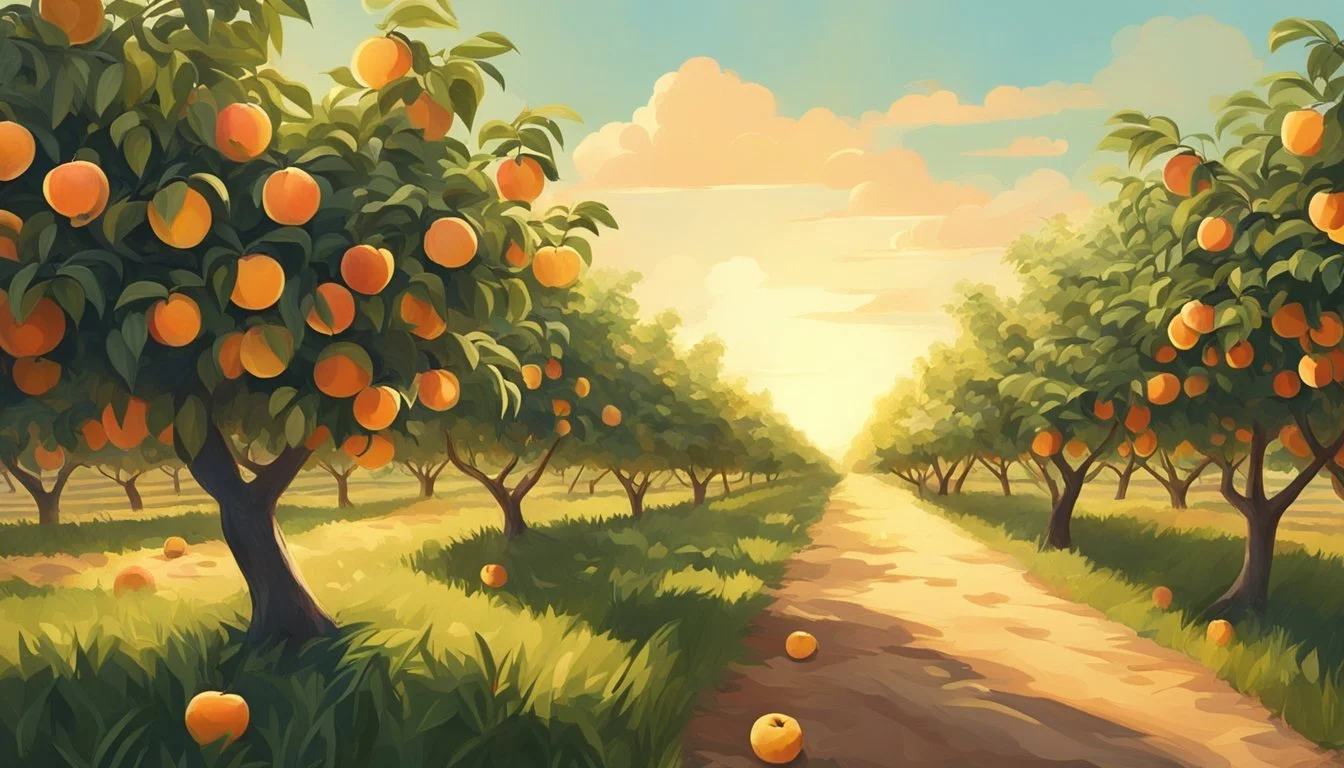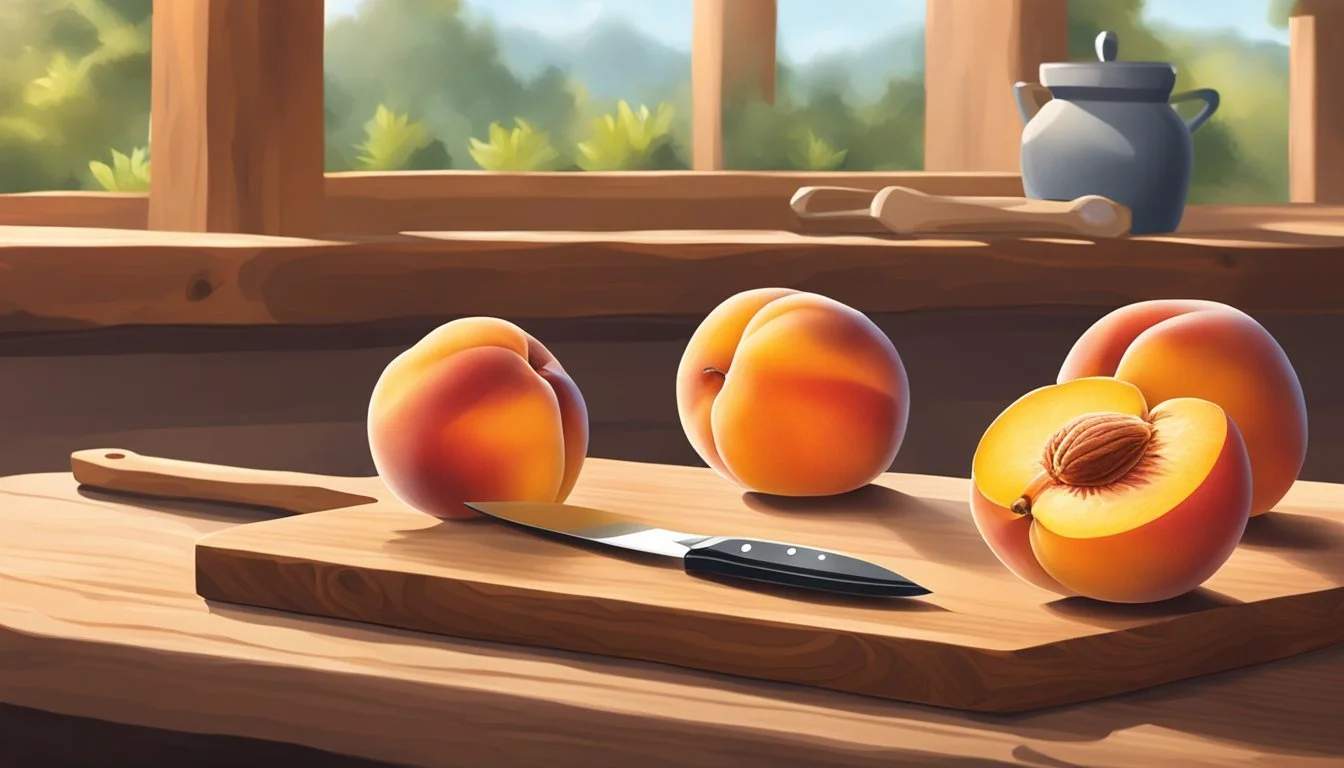How to Tell if Freestone Peaches Are Ripe
Your Ultimate Ripeness Checklist
Determining the ripeness of freestone peaches is essential for enjoying their full flavor and succulent texture. Freestone peaches are cherished for their easily removable pits, making them ideal for fresh consumption and culinary uses alike. Unlike clingstone peaches, where the flesh clings tenaciously to the pit, freestone peach varieties offer a juicy flesh that separates readily from the stone. The market typically offers both yellow and white freestone peaches, each boasting its unique flavor profile and level of sweetness.
Selecting the perfect freestone peach at the peak of ripeness requires knowledge of both tactile and visual cues. Ripe peaches usually exhibit a sweet fragrance and yield slightly to gentle pressure near the stem end. The skin around the stem should display a mature color, devoid of green hues, which indicates under-ripeness. A well-informed consumer can ensure that each peach they select has the best potential for full flavor development, whether the goal is to consume it fresh or to incorporate it into recipes that highlight the peach's natural goodness.
Key Takeaways
Select freestone peaches with a sweet aroma and a slight give near the stem end for optimal ripeness.
Freestone varieties are preferable for their pit-separation quality, enhancing their use in various culinary preparations.
Ripe peaches should have a deep, uniform color without any green areas, indicating they are ready to eat or use in recipes.
Understanding Peach Varieties
When selecting peaches, knowing the differences in varieties and ripening times is essential to making the best choice for eating or culinary use.
Freestone vs Clingstone Peaches
Freestone peaches have flesh that easily separates from the pit, making them a prime choice for fresh consumption and cooking. Clingstone peaches, however, have flesh that clings to the pit. While clingstones are often enjoyed fresh, their adherence to the pit can make preparation for recipes more challenging.
Peach Varieties Overview
Contender: This freestone variety is known for its sweet flavor and good freezing quality.
Elberta: A traditional freestone favorite with large, sweet fruits.
Redhaven: An early-season, semi-freestone peach with a good balance of sweetness and acidity.
Semi-freestone: A category that is a mix between freestone and clingstone, offering a compromise of qualities from both types.
Nectarines: Essentially fuzzless peaches, they share the same distinction between clingstone and freestone types.
These varieties are a few examples of the numerous peach options available on the market.
Seasonal Availability of Peaches
Peaches are a summer fruit, with different varieties ripening at various times throughout the season. Generally, the freestone peach types are harvested starting:
Variety: Contender
Estimated Harvest Time: Late July to August
Variety: Elberta
Estimated Harvest Time: August to September
Variety: Redhaven
Estimated Harvest Time: Early July
Variety: Semi-freestone
Estimated Harvest Time: Timing varies
Variety: Nectarines
Estimated Harvest Time: Simultaneous with peaches, depending on variety
These harvest times are approximate and can vary based on location and yearly climate conditions.
Identifying Ripe Peaches
When selecting freestone peaches, one can determine ripeness via color examination, tactile examination, and olfactory senses, ensuring the peach’s readiness for consumption.
Color and Appearance
A ripe peach displays a golden yellow to deep yellow coloration, particularly where it has been shaded from sunlight. The absence of green tinges around the stem is a key indicator of ripeness. Sun-exposed parts of the peach should exhibit a reddish blush, signaling it has reached optimal maturity. Peaches showing any green or light yellow regions are typically not yet ripe.
Firmness and Touch
Ripe peaches will yield slightly under gentle pressure, indicating a soft, but not mushy, texture. They should maintain a moderate firmness, especially around the stem and the blossom end. If a peach feels overly hard, it may require additional time to ripen, whereas an excessively soft peach could be past its prime.
Aroma and Smell
Ripe freestone peaches emit a sweet and fragrant aroma that is easily noticeable, signifying a high sugar content and full development. A lack of fragrance often implies that a peach is not yet ripe. One should avoid peaches that have an overripe or fermented smell, as these may be indicative of spoilage.
The Ripening Process
When freestone peaches transition from the orchard to being ready-to-eat, understanding the ripening process is crucial for the consumer. This journey is characterized by two distinct stages: post-harvest ripening and at-home ripening procedures, all of which play a pivotal role in ensuring a perfectly ripe peach.
From Orchard to Store
After freestone peaches are harvested, they continue to ripen off the tree. This natural process is due to the emission of ethylene gas, a compound that promotes ripening in many fruits. The peaches are picked when they are mature but still firm, to withstand the trip to stores without getting bruised.
Orchard Handling: They are typically harvested by hand to prevent bruising.
Transporting: During transport, they are kept at room temperature to facilitate the ripening process.
In Stores: Upon arrival at the store, they may still be firm to the touch and continue to ripen until they reach optimal softness.
Ripening Peaches at Home
Consumers can expedite the ripening of freestone peaches by following a simple method:
Paper Bag Technique: Place peaches in a paper bag at room temperature.
Include another fruit: Add a ripe banana or apple to the bag to increase ethylene concentration.
Monitor Ripeness: Check daily for softness and fragrance signifying ripeness.
Refrigeration: To slow down ripening, place peaches in the refrigerator, but only if they are nearly ripe, as cold temperature can prevent further ripening.
Ripening peaches at home allows for control over the process, ensuring that the freestone peaches are at their peak when consumed.
Signs of Overripeness
Identifying an overripe peach is important to avoid spoilage and waste. An overripe freestone peach may present the following characteristics:
Visual Signs: Dark spots or a too soft, wrinkled skin.
Touch: A mushy feel when slight pressure is applied, indicates past peak ripeness.
Time Frame: Typically, after a week at room temperature, peaches may start to show signs of overripeness.
Freestone peaches exhibit a limited window of perfect ripeness and recognizing these signs helps in preventing the disappointment of biting into an overripe fruit.
Storing and Preserving Peaches
When dealing with freestone peaches, proper storage and preservation are crucial to maintain their quality and extend their usability. Different methods are suited for varying durations and intended uses, from short-term consumption to long-term preservation.
Short-term Storage
For immediate or short-term usage, ripe freestone peaches are best stored in the refrigerator, ideally in the crisper drawer to prolong their freshness. They should be placed in a single layer, with the stem side down, to prevent bruising and to retain the delicate texture of the flesh. It is advisable to consume refrigerated peaches within a week to enjoy their optimal flavor and texture.
Freezing Peaches
Freezing is an excellent option for long-term storage while preserving the peach's flavor and nutritional value. To freeze peaches:
Wash and dry the peaches thoroughly.
Cut an "X" on the bottom of each peach.
Blanch in boiling water for 30-60 seconds.
Transfer immediately to an ice water bath.
Peel off the skins.
Slice the flesh and remove the pit.
Place slices on a baking sheet, not touching, and freeze until solid.
Transfer frozen slices to airtight containers or freezer bags.
Peaches can be kept frozen for up to twelve months.
Canning and Preserving
Canning is a traditional method that seals the peaches in airtight containers, offering a way to enjoy the produce long after the season has ended. To can peaches:
Sterilize canning jars and lids.
Prepare a light syrup or use water, depending on sweetness preference.
Pack peeled and halved peaches into jars and cover with the liquid.
Process in a water bath canner for the time specified by a reliable canning guide.
Properly canned peaches can be stored in a cool, dark place and consumed within a year for the best quality.
Preparing Peaches for Consumption
Before enjoying the sweet flesh of a freestone peach, it is important to properly prepare them for consumption, whether for eating fresh, cooking, or baking. Each step—from washing to pitting—requires care to ensure the fruit's quality is preserved.
Washing and Cleaning
One must gently rinse peaches under cool running water before consuming them to remove any residual dirt or pesticides that may linger on the skin. It is recommended to use a soft brush to lightly scrub the surface, as peaches have delicate flesh that can bruise easily.
Slicing and Pitting
Freestone peaches are known for their pits that easily separate from the flesh, making them ideal for slicing. To pit a peach, one should cut along the natural seam, twist the halves in opposite directions, and carefully remove the pit. Slices should be even for cooking or baking, ensuring each piece cooks uniformly.
Cooking and Baking
For cooking or baking, peaches should be firm but ripe to withstand the heat while retaining their sweet flavor. Cooking usually softens the flesh, which can enhance the peach’s natural sweetness. Baking often involves incorporating sliced peaches into recipes for pies or tarts, where they contribute their full-bodied flavor. When prepping for baking, consistent slice thickness is key for even cooking.
Peach-Inspired Recipes
Ripe freestone peaches offer versatility in the kitchen, gracing everything from sweet desserts to savory dishes, and even refreshing beverages. Explore the following recipes to harness the full potential of this luscious fruit.
Sweet Desserts
Peach Cobbler: The quintessence of summer desserts, peach cobbler combines ripe, juicy peaches with a buttery, golden-brown crust. Preheat the oven to 375°F, then layer sliced peaches tossed in sugar, lemon juice, and a touch of cinnamon in a baking dish. Top with dollops of biscuit batter and bake until bubbly and golden.
Peach Pie: A classic dessert that allows the peach to shine is the peach pie. Begin with a flaky pastry crust, add a filling of sliced freestone peaches mixed with sugar, a hint of nutmeg, and flour to thicken. Cover with a lattice top crust and bake until the filling is bubbling and the crust achieves a perfect golden hue.
Savory Dishes
Grilled Peach Salad: A salad that brings out the smokiness of peaches is an excellent foray into savory applications. Grill halved peaches until charred lines appear, then slice and serve on a bed of arugula, goat cheese, and a drizzle of balsamic glaze.
Peach Glazed Chicken: Create a sweet and tangy glaze for chicken by reducing peach puree with honey, garlic, and a splash of soy sauce. Brush the glaze on roasted or grilled chicken for a dish that balances the sweetness of peaches with the savoriness of the meat.
Peach Beverages
Peach Iced Tea: A refreshing choice for a hot day is peach iced tea. Steep black tea and let it cool, then infuse with fresh peach slices and sweeten with honey or sugar to taste. Serve over ice for an invigorating, fruity twist on a classic drink.
Peach Smoothie: For a healthful breakfast option, blend ripe peaches with Greek yogurt, honey, and a bit of orange juice. The result is a creamy, tangy smoothie that's both nutritious and delicious, perfect for starting the day.
Understanding Peach Cultivation
To ensure quality harvests of freestone peaches like Reliance, Angelus, Red Globe, O'Henry, John Boy, and Gem, it's crucial to understand their specific cultivation needs. From climatic requirements to post-harvest handling, each step plays a vital role in the fruit's quality.
Climatic Requirements of Peach Trees
Peach trees thrive in a climate that provides sufficient chill hours, which refer to the cumulative number of hours below 45°F (7°C) during the dormancy period. Freestone peach cultivars such as the Reliance and O'Henry require between 800 to 1,000 chill hours. It's paramount that the chosen orchard site meets these requirements for robust flowering and fruiting.
Temperature Tolerance: Most peach varieties are hardy to -10°F, with Reliance being notable for its capacity to withstand temperatures down to -25°F.
Sunlight: Peach trees demand full sun exposure, defined as at least 6-8 hours of direct sunlight per day.
Growing and Harvesting Techniques
A successful peach orchard starts with proper planting and cultivation practices. Each tree should be planted in well-draining soil with a pH of 6.0-6.5 to encourage vigorous growth. Key growing techniques include:
Tree Spacing: Standard-sized peach trees need to be spaced 20 feet apart, while dwarf types require 12-15 feet.
Pruning: A practice aimed at fostering three main branches for balanced growth and sunlight penetration.
Fertilization: In the growing season, a balanced fertilizer application is crucial, with young trees needing nitrogen supplementation.
Harvesting times for peach varieties differ, with cultivars like John Boy and Gem generally maturing in midseason. Peaches must be picked when they reach full size, exhibit a deep yellow or cream background color, and give off a fragrant aroma.
Post-Harvest Handling and Transport
After the harvest, correct handling is essential to maintain the peaches' quality during transport. A brief outline includes:
Gentle Handling: Peaches are prone to bruising, so they should be picked and transported with care.
Temperature Control: Pre-cooling immediately after harvest and maintaining a cold chain during transport prevents spoilage.
Packaging: Using cushioned packaging materials helps in minimizing damage during transit.
By adhering to the specific requirements and methods outlined above, growers can ensure their freestone peaches, such as the robust Reliance or the flavorful Angelus, arrive to consumers in the best condition possible.
Health Benefits and Nutritional Information
When assessing the nutritional benefits of peaches, particularly freestone varieties, it is notable that they are a rich source of vitamins, minerals, and dietary fiber. These nutritional elements contribute significantly to the health benefits associated with this succulent fruit.
Vitamins and Minerals
Peaches are loaded with an array of essential vitamins and minerals. A medium-sized peach delivers:
Vitamin C: An antioxidant crucial for skin health and immune function.
Vitamin A: Important for vision and the health of epithelial tissues.
Potassium: Helps regulate fluid balance and maintain healthy blood pressure.
In fact, one can expect to consume the following approximate values from a medium peach:
Nutrient: Vitamin C
Amount: 10% RDI
Nutrient: Vitamin A
Amount: 9% RDI
Nutrient: Potassium
Amount: 8% RDI
RDI: Recommended Daily Intake
Dietary Fiber Content
Freestone peaches are an excellent source of dietary fiber, which is beneficial for digestive health. A medium peach contains about 2 grams of fiber. Consuming fiber-rich fruits like peaches can aid in:
Promoting a feeling of fullness.
Supporting healthy bowel movements.
Managing blood sugar levels.
Countering Diseases with Peaches
The nutritional composition of peaches not only supports general well-being but also aids in the prevention of various diseases. The antioxidants and phytonutrients in peaches can help:
Combat oxidative stress.
Reduce inflammation.
Lower the risk of chronic conditions such as heart disease.
It is the combination of these nutrients that fortifies the body's defenses against illness, demonstrating that freestone peaches are more than just a delicious summer fruit; they are a beneficial addition to a healthy diet.
Frequently Asked Questions
In this section, one will find specific information about selecting ripe freestone peaches, understanding potential allergic reactions to peaches, and discovering advances in peach varieties.
Selecting Peaches in Grocery Stores
When shopping for peaches in a grocery store, it is essential to examine the color and fragrance. Ripe freestone peaches typically have a deep yellow or cream color, often accompanied by a rosy blush. A ripe peach should emit a sweet, distinct aroma, signaling its readiness for consumption. In contrast, peaches with greenish hues are likely unripe. Availability also varies; for instance, Canadian Harmony peaches may hit grocery stores during different times based on the region.
Peach Allergies and Sensitivities
Allergic reactions to peaches can occur, often presenting symptoms similar to other fruit allergies. A shopper dealing with fruit allergies must exercise caution and perhaps consult a healthcare provider before consumption. Sensitivities to peaches might include oral allergy syndrome, which leads to itching or tingling in the mouth and can be related to a birch pollen allergy.
Innovations in Peach Varieties
The peach industry continually evolves, with newer varieties like 'Glohaven' and 'Madison' developed for their superior qualities. These advancements aim to produce fruits that maintain optimal flavor and resist common diseases, enhancing peach availability and quality in grocery stores. In regions such as Georgia, known for its peach production, the selection of improved and hearty varieties ensures a reliable and delicious peach harvest.






